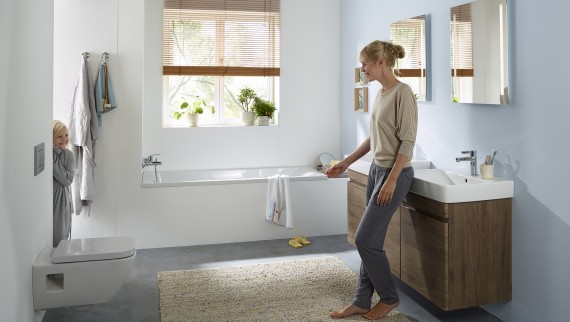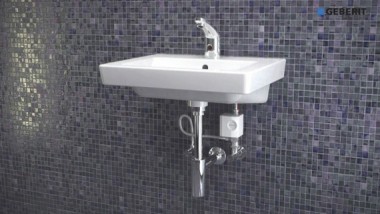Waste in the bathroom Seven tips on how to avoid it
Our rituals in the bathroom are accompanied by numerous products that bring a lot of plastic waste with them. Every person in Europe produces an average of 480 kilograms of waste a year. You can reduce this waste considerably – even in the bathroom. Take a look here at seven of our best tips for less waste in the bathroom.
Tip 1 - Deodorant
Plastic waste is the greatest problem in the bathroom. But it can often be avoided providing you choose the right products. Why stick to a deo spray for example? They usually come in either a metal or plastic container. But you don’t really need a spray. Cream deodorants are an ideal alternative. They usually come in a glass container or a metal tin which can be reused.
Tip 2 - Toothbrush:
Usually, the handle of a toothbrush is made of plastic and the bristles are made of nylon, so in other words also plastic. Dentists recommend you change your toothbrush every three months. That means four toothbrushes a year per person. In turn, that translates to millions of toothbrushes a year. If you buy a bamboo toothbrush instead, you avoid plastic waste. Bamboo is one of the fastest-growing raw materials on the planet – it can grow up to one metre in height within just one day.

Tip 3 - Toothpaste
Conventional toothpaste usually comes in a plastic container – and at the end of the day you can never get everything out of the tube. Really a no-go. But there is a new alternative that is offering zero waste: the toothpaste tablet. You put the tablet in your mouth, chew it until a light foam appears and then brush your teeth with a toothbrush as usual.
Tip 4 - Soap
Just a few decades ago, a bar of soap was a standard in bathrooms. Today, liquid soap is all the rage, replacing the good old bar of soap. And liquid soap usually comes in a plastic bottle. Solid soap usually comes in paper packaging, and it is actually relatively easy to make your own soap at home. A simple way to say goodbye to another plastic product in the bathroom.
Tip 5 - Shampoo
And there is also a plastic-free alternative for your hair. Instead of using conventional shampoo out of a plastic bottle, use solid shampoo when you take a shower. It looks like a normal bar of soap and is really easy to use: you rub the bar between damp hands to produce some foam. You use that to lather your hair and then rinse it off with water as usual. And you have banished yet another waste product made of plastic from the bathroom.
Tip 6 - Sanitary pads and tampons
Female menstrual hygiene is waste-intensive. In their lives, women need on average anywhere between 10,000 and 17,000 tampons and sanitary pads. But instead of using the standard disposable products, women could start using menstrual cups. These cups are usually made of medical silicone, in other words plastic. But they can be cleaned after use and then used time and again. In a best-case scenario, a menstrual cup can last for years.
Tip 7 - Toilet paper
Many rituals in the bathroom are set in stone for many people. For some, for example, it is absolutely inconceivable that they would clean their bottom with anything other than paper. And yet a shower toilet is a far more hygienic alternative. Washing any dirty parts with water is a much cleaner method and also saves incredibly on toilet paper. So it’s certainly worth thinking about changing your routine in the toilet.
Which bathroom is the right one for you?
But, what exactly are your needs? Is space, cleanliness or the design important to you? Would you like user-friendly products or would you prefer that extra degree of comfort has to offer? Or would you prefer a universal design? No matter what your needs are, we simplify your daily routine with our clever bathroom solutions.
More space in the bathroom
Higher standard of cleanliness in the bathroom
More functional design in the bathroom
Greater comfort in the bathroom
Increased accessibility in the bathroom
Improved usability in the bathroom

